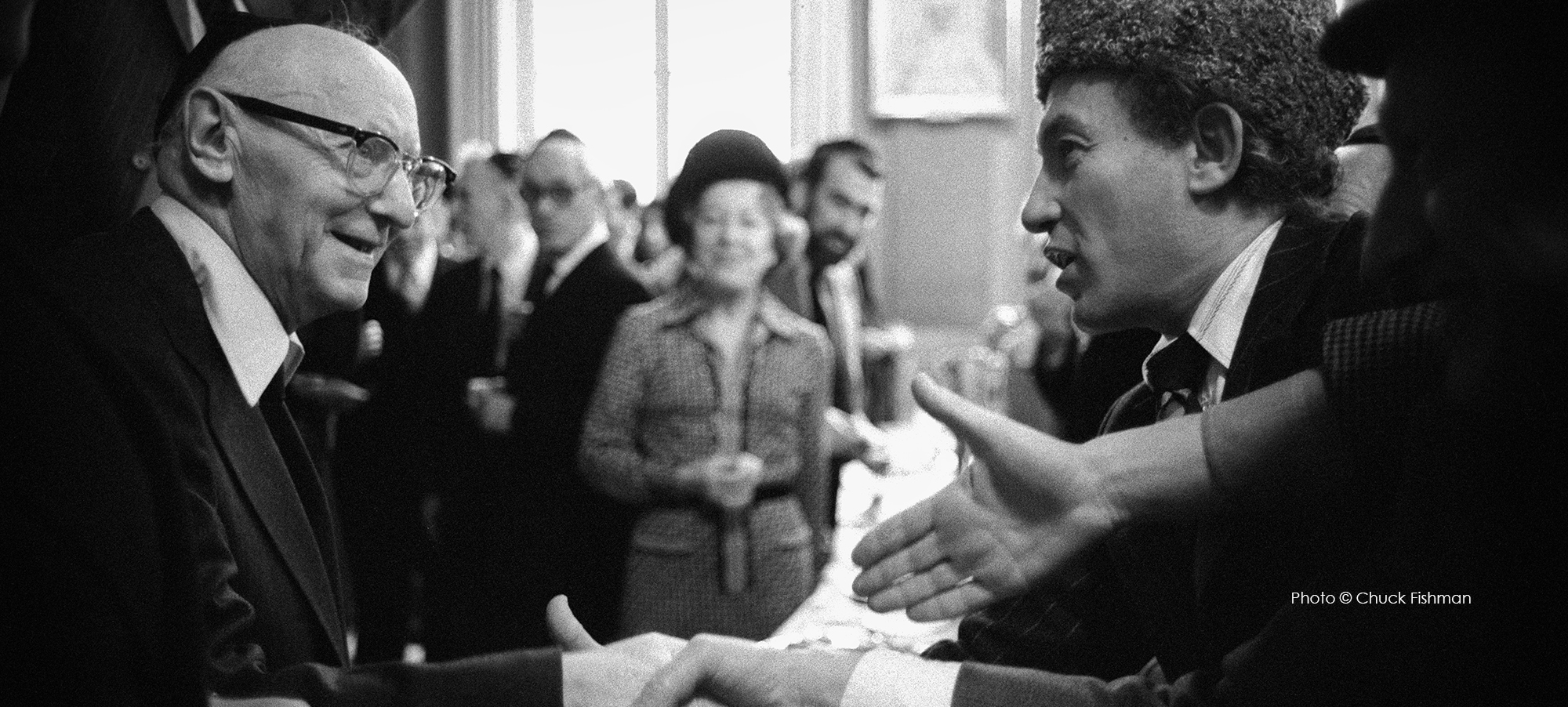Born in 1903, in the Polish town of Leoncin, and residing briefly in a Hasidic court in Radzymin, Singer’s family eventually moved to Warsaw and lived on Krochmalna St. – which became the setting for many of his stories and novels, including his autobiographical work In My Father's Court (1967).
In 1917, two years after the German occupation of Warsaw in the First World War, Singer's mother took him and his younger brother to her hometown of Bilgoraj, an isolated Jewish shtetl where Singer witnessed how Polish Jews had lived before the modern age. He moved to Warsaw in 1923, removing his religious garb, and working as a proofreader for the Yiddish journal Literarishe Bleter, where his older brother, Israel Joshua Singer, worked as an editor. Having earlier experimented with writing in Hebrew, he now began to write reviews and short stories only in Yiddish. In Warsaw, he met Runia (Rachel) Pontsch, and in 1929, she gave birth to a son, Israel Zamir, Singer's only child.
Beginning in 1932, Singer's writing published his first "mature" works, including a short story titled "The Jew from Babylon" (1932) and a slim novel titled Satan in Goray (1933). In 1935, he was helped by his older brother – who had moved to New York and worked for the Jewish Daily Forward – to immigrate to America. In the United States, Singer went through a period of depression in which he published little fiction. In 1938, he met Alma Wasserman and the two married in 1940.
Photo © Chuck Fishman
Isaac Bashevis Singer at this home in Manhattan.
In the 1940s, Singer began to write under several pseudonyms as a freelancer for the Forward – publishing current affairs, op-eds, advice pieces. In 1942, he returned to fiction, and soon published his first story to feature the devil as a narrator, “Zeidlus the Pope” (1943). In 1945, a year after his older brother’s death from a heart attack, Sincer began to publish a major historical novel in Yiddish, The Family Moskat, which appeared in English in 1950. In 1953, his story "Gimpel the Fool," which had originally appeared in Yiddish in 1945, was published in Saul Bellow's translation in The Partisan Review and then in A Treasury of Yiddish Stories (1954), edited by Irving Howe and Eliezer Greenberg. In 1955, Satan in Goray appeared in English translation. By then, Singer had lost his father, mother, and all three of his grown siblings.
Singer’s popular success began with the publication of his first collection, Gimpel the Fool and Other Stories (1957), and his novel, The Magician of Lublin (1960). Over the next two decades, his popularity grew as he published his stories in magazines such as Harper's and The New Yorker. He also began to write children's books, including Zlateh the Goat and Other Stories (1966), illustrated by Maurice Sendak. He lectured regularly and continued to produce new stories, novels, and collections in both Yiddish and English, including The Spinoza of Market Street (1963), A Friend of Kafka and Other Stories (1970), Enemies, a Love Story (1972), and Shosha (1978). In 1978, Singer received the Nobel Prize for Literature – the only writer in Yiddish to receive the honor.
Singer continued to write and translate his stories and novels throughout the 1980s, until the onset of dementia in 1987. He died on July 24, 1991, in Surfside, Florida, and was buried in Cedar Park & Beth El Cemetery, Paramus, New Jersey.
The Estate of Isaac Bashevis Singer aims to preserve the author's literary legacy and to maintain his artistic vision. The Estate encourages the translation, publication, and adaptation of Singer's work – old and new – to various platforms, including print, stage, film, and other media, bringing Singer's wisdom and storytelling powers to new venues and generations.


